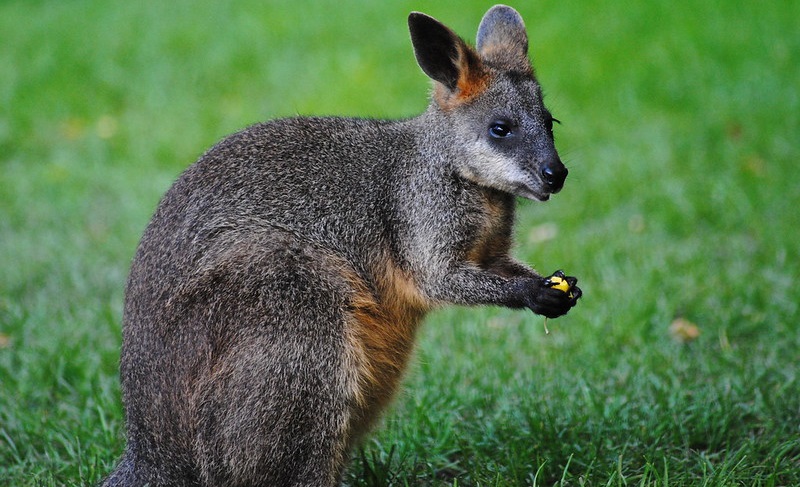How Do Kangaroos Sleep
Kangaroos sleep by resting on their sides with their legs stretched out in front and behind them. These marsupials have a unique sleeping posture that allows them to conserve energy and stay protected from predators.

Kangaroos, the iconic Australian marsupials, have adapted to their surroundings in many ways. Apart from their distinctive hopping motion and powerful hind legs, their sleeping habits are also quite remarkable. To catch some zzz’s, kangaroos often lie on their sides with their legs extended – one in front and the other stretched out behind – creating a comfortable and relaxing position.
This posture not only helps them conserve energy but also enables them to keep an eye out for potential threats, like approaching predators. We will explore the fascinating sleeping habits of kangaroos, shedding light on why their unique sleeping position is vital to their survival.

The Unconventional Sleeping Patterns Of Kangaroos
Kangaroos have unconventional sleep patterns, and their behaviors during sleep are truly unique. Contrary to common beliefs, kangaroos don’t sleep for long periods. They have short naps throughout the day and night, often dozing off for a few minutes at a time.
Kangaroos are also known for their ability to sleep in almost any position. They might be seen lying on their side, back, or even with their legs folded underneath them. This unusual sleep behavior is a result of their anatomical adaptations, including strong hind legs and a muscular tail that helps them balance while sleeping.
Additionally, kangaroos have a hypnogenic jerk reflex, causing them to twitch or jolt their bodies as they fall asleep. Overall, the sleeping habits of kangaroos continue to intrigue researchers and challenge our understanding of sleep in the animal kingdom.

Sleep Duration And Environment Of Kangaroos
Kangaroos sleep for an average of 4 to 6 hours each day, which is relatively short compared to other mammals. The duration of their sleep can vary depending on environmental factors. They often prefer to rest in shady areas during warm weather and bask in the sun during colder times.
The location of their sleep also plays a vital role, as kangaroos feel most secure sleeping in areas with dense vegetation or close to bushes. They are alert animals that are always on the lookout for potential threats, so the safety of their sleeping environment is crucial.
The impact of environmental factors on kangaroo sleep is significant, as it directly affects their sense of security and comfort. By understanding and respecting these needs, we can ensure the well-being of these unique and fascinating creatures.
Kangaroo Sleeping Positions And Adaptations

Kangaroos exhibit various sleeping positions that are unique to their species. One common position is the “sternal” position, where the kangaroo sits upright with its hind legs folded beneath its body. This enables them to quickly stand up and hop away if necessary.
Another position is the “defended posture,” where the kangaroo lies down on its side, using its arms and tail for support. This position is ideal for resting and conserving energy. Additionally, kangaroos have certain adaptations that facilitate sleep. For instance, their strong tails act as a counterbalance, allowing them to balance in different positions while sleeping.
Their large feet and strong hind legs also support their weight during sleep. Understanding the sleeping positions and adaptations of kangaroos provides insight into their unique ways of resting and surviving in their natural habitat.
Frequently Asked Questions For How Do Kangaroos Sleep? This Is How They Sleep!
How Many Hours Does A Kangaroo Sleep?
A kangaroo typically sleeps for around 4 to 6 hours a day.
Do Kangaroos Nap?
Kangaroos do nap. They take short breaks to rest and conserve energy during the day.
Why Do Kangaroos Only Come Out At Night?
Kangaroos come out at night due to their nocturnal behavior and to avoid extreme heat during the day.
Why Do Kangaroos Spend So Much Time Sleeping?
Kangaroos spend a lot of time sleeping because it helps them conserve energy.
Conclusion
Understanding how kangaroos sleep gives us fascinating insights into the unique behaviors of these iconic Australian animals. Through their natural adaptations, kangaroos have developed efficient ways of conserving energy and protecting themselves from predators while achieving the rest they need.
Their ability to enter a state of torpor during periods of extreme heat or food scarcity demonstrates their remarkable adaptability and survival strategies. Additionally, the differences in sleeping patterns between kangaroo species highlight the diversity within this animal group. By delving into the intricate details of kangaroo sleep, scientists can unravel the mysteries of energy conservation and sleep patterns in a broader ecological context.
So, next time you spot a kangaroo snoozing in the shade, remember the fascinating adaptations that allow these marsupials to thrive in harsh environments and maintain their energetic lifestyles.







